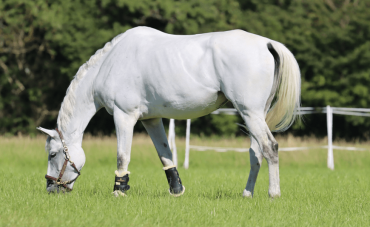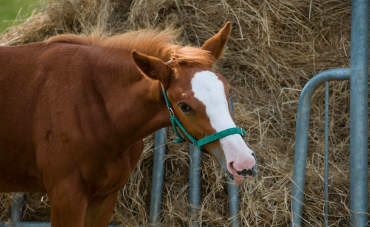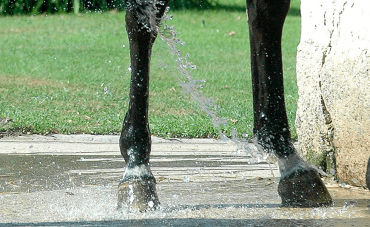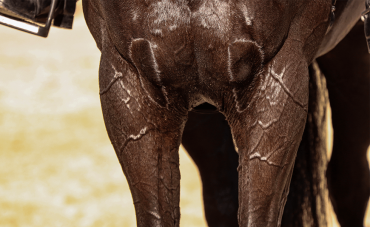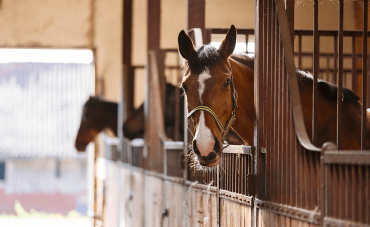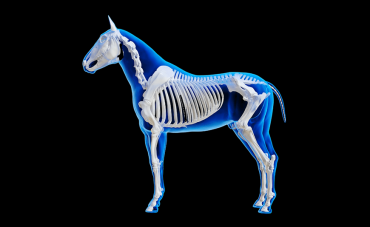Piroplasmosis is caused by the microscopic parasites Babesia and Theileria, transmitted by bites from infected ticks.
What is it?
Cause
Piroplasmosis affects numerous animal species (horses, dogs, bovines). It is caused by the microscopic parasites Babesia and Theileria, transmitted by bites from infected ticks. Although these parasites all belong to the same family, they differ according to the species they infect. Those causing piroplasmosis in horses are not the same as those that infect dogs.
Systemic Effects
Horses become infected following a bite from a tick carrying the parasite. Once in the horse's body, the parasites invade and colonise the red blood cells. They develop and multiply there, ultimately causing host red blood cells to burst. Babesia parasites are released and rapidly attack other cells. Destruction of red blood cells releases haemoglobin (a brown-red pigment), which is in turn released into the blood, then the urine, turning it a dark colour. Immune reactions take place, increasing red blood cell destruction and leading to various symptoms including anaemia, which can be severe.
Additional Information
Acute forms of piroplasmosis are easier to identify. Horses will display a high temperature (often over 40°C), a high respiratory rate and reduced appetite, and they become very weak. The gums and inside of the eyelids are usually pale or yellowish at first, and may then turn straw coloured. Small red spots (petechiae) may appear. The lower body may be swollen (oedema), and droppings small and dry. Mild colic symptoms may also be observed. The urine is often dark in colour due to haemoglobin derivatives.
Chronic forms are a lot less distinctive, with less obvious symptoms such as lack of appetite, reduced performance and weight loss. Swollen limbs may be observed in chronic forms.
Tests
Standard Tests
The simplest test involves examining a drop of blood under the microscope. After staining the white blood cells and any parasites with a special stain, the parasites causing piroplasmosis can be seen inside the red blood cells. A blood test is also useful to measure the effects of the disease on the body's functioning, particularly kidney function.
Possible further tests
If the horse does not have an acute form of piroplasmosis, it is very difficult to see the parasites under the microscope. Other blood tests are therefore required, either to detect antibodies and immune system reactions (serology), or to identify parasite DNA (PCR test).
Treatment
Main treatment guidelines
Piroplasmosis is treated with a very unique antiparasitic non-specific to horses, which requires a series of two to five injections, 24 to 72 hours apart, depending on which parasite is responsible (Babesia equi or Babesia caballi). Although the treatment usually removes all the parasites, some may still survive, even if the horse appears to be cured. Relapse is then possible, in particular if the horse is very tired or stressed. Horses with confirmed piroplasmosis should therefore be monitored.
To treat disease-related anaemia, which can be fairly severe, the vet will try to stimulate red blood cell production by administering the appropriate products.
Nutritional Solutions
Your vet may recommend the use of supplements to provide the necessary nutritional elements. REDPLEX+ by Laboratoires Audevard is enriched with iron, copper, cobalt and vitamins, which are all essential to blood cell production. Ask your vet for advice.
Hygiene and prevention measures
Piroplasmosis is a tick-borne disease. It is therefore essential to minimise tick infestations and the risk of bites. The first measure that should be taken is to clean pastures to remove as many areas likely to harbour ticks as possible (heaps of dead leaves, undergrowth etc.). Horses should also be protected directly by rapidly removing any ticks attached to the animal, and by applying suitable and preferably long-acting insecticides and insect repellents to its entire body. There are a number of these kinds of products on the market. Ask your vet for advice.

